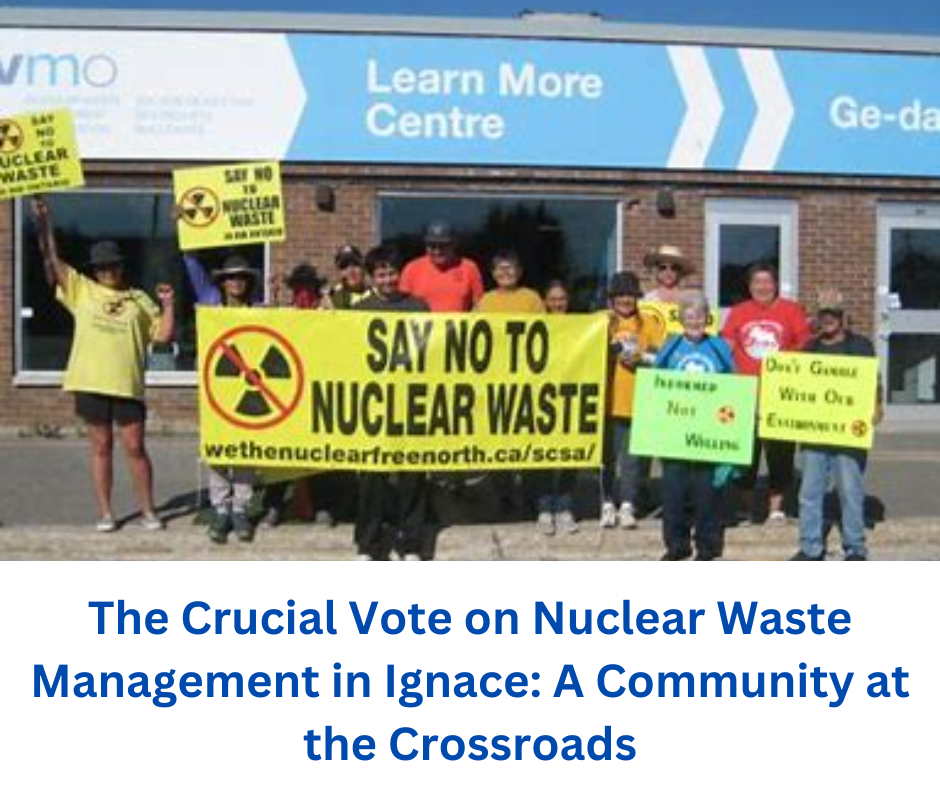The small community of Ignace, located in the scenic landscapes of Northwestern Ontario, is facing a monumental decision that could shape its future for generations. This decision revolves around whether to host a deep geological repository (DGR) for Canada’s nuclear waste. As the community prepares to vote on this critical issue, the stakes have never been higher.
Understanding the Deep Geological Repository
What is a Deep Geological Repository?
A deep geological repository is an engineered facility designed to safely isolate radioactive waste deep underground. The concept involves storing the waste in a stable geological formation, where it can remain isolated from the biosphere for thousands of years. This method is considered by many experts to be the safest and most effective way to manage long-term nuclear waste.
Why Ignace?
The selection of Ignace as a potential site for the DGR is based on extensive scientific research. The area’s geological stability, coupled with its remote location, makes it an ideal candidate. However, the decision to proceed with the DGR is not purely scientific; it also hinges on the consent and cooperation of the local community.
The Community’s Perspective
Economic Benefits
One of the primary arguments in favor of the DGR is the potential economic benefits for Ignace. Hosting the repository could bring significant investment to the area, including job creation and infrastructure development. The construction and operation of the facility are expected to create hundreds of jobs, providing a much-needed boost to the local economy.
Environmental Concerns
Despite the potential economic benefits, there are substantial environmental concerns. Opponents of the project worry about the long-term safety of storing radioactive waste underground. They fear potential contamination of groundwater and the surrounding environment. These concerns are amplified by the inherent uncertainties in predicting geological stability over thousands of years.
Social and Cultural Impact
The decision to host the DGR also has profound social and cultural implications. Ignace is home to several Indigenous communities, whose relationship with the land is deeply rooted in their cultural and spiritual traditions. The prospect of a nuclear waste repository raises questions about the preservation of cultural heritage and the rights of Indigenous peoples.
The Role of Indigenous Communities
Consultation and Consent
Engaging with Indigenous communities is a critical aspect of the decision-making process. The principles of free, prior, and informed consent (FPIC) are central to ensuring that these communities have a meaningful say in the project. This involves transparent communication, respect for traditional knowledge, and addressing any concerns raised by Indigenous leaders.
Potential Benefits and Risks
For Indigenous communities, the potential benefits of the DGR include economic opportunities and community development initiatives. However, these benefits must be weighed against the risks to their traditional lands and ways of life. The decision to support or oppose the DGR is complex and deeply personal for many Indigenous people.
The Scientific and Technical Aspects
Safety Measures and Monitoring
The design and operation of a DGR involve rigorous safety measures. These include multiple barriers to contain the waste, continuous monitoring of the repository, and contingency plans for any potential issues. Scientists and engineers emphasize that the DGR would be constructed to withstand natural events such as earthquakes and glaciation.
Research and Development
Ongoing research and development are essential to the success of the DGR. This includes studying the behavior of radioactive waste over time, developing advanced materials for waste containment, and improving monitoring technologies. The aim is to ensure the repository remains safe and secure for as long as the waste poses a hazard.
Public Engagement and Decision-Making
Informing the Public
A critical component of the decision-making process is public engagement. Ensuring that the residents of Ignace are fully informed about the DGR, its potential benefits, and its risks is paramount. This involves public meetings, informational sessions, and accessible resources that explain the project in detail.
The Voting Process
The upcoming vote in Ignace is a pivotal moment. It represents the culmination of years of research, consultation, and community discussion. The outcome of the vote will determine whether the community supports moving forward with the DGR or rejects it.
Looking to the Future
Potential Outcomes
If the vote supports the DGR, Ignace could become a model for nuclear waste management worldwide. The project could demonstrate how communities can balance economic development with environmental stewardship and social responsibility. Conversely, if the vote opposes the DGR, it will send a strong message about the community’s priorities and values.
Long-Term Implications
The decision on the DGR will have long-term implications for Ignace and the surrounding region. It will influence the area’s economic landscape, environmental health, and social fabric for generations to come. As such, it is crucial that the community makes an informed and thoughtful decision.
